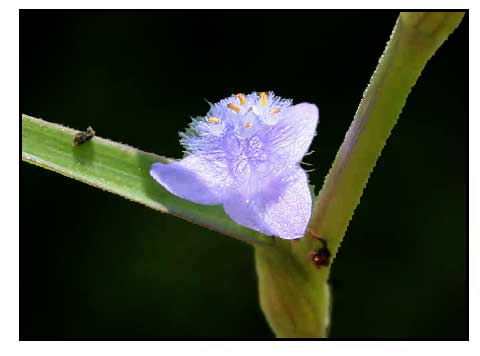
Family • Commelinaceae
Sabilau
Cyanotis axillaris (Linn.) D. Don ex Sweet
SPREADING DAYFLOWER
Qiao huo lan er cao
| Scientific names | Common names |
| Amischophacelus axillaris (L.) R. Rao & Kamm. | Alikbañgon (Tag.) |
| Commelina axillaris Linn. | Alitbañgon (Tag.) |
| Cyanotis axillaris (L.) D. Don ex Sweet | Kulasin-marintek (Pang.) |
| Cyanotis disrumpens Hassk. | Sabilau (P. Bis.) |
| Tonningia axillaris (L.) Raf. | Spreading dayflower (Engl.) |
| Tonningia axillaris (L.) Kuntze | |
| Tradescantia axillaris (L.) L. | |
| Zygomenes axillaris (L.) Salisb. | |
| Alikbangon is a common name phonetically confused with aligbangon (Tradescantia rufa, sambilau), alibañgon (Commelina benghalensis, bias-bias), alitbangon. |
|
| Alikbañgon is shared by Commelina diffusa and Commelina axillaris (Cyanotis axillaris) | |
| Cyanotis axillaris (L.) D.Don ex Sweet is an accepted name The Plant List | |
| Other vernacular names |
| CHINESE: Qiao bao hua, Qiao huo lan er cao. |
| INDIA: Tena arxa, Tena arkha, Nilani phul, Salt-raj, Baghanulla. |
| TAMIL: Vazhukai pul. |
| THAI: Phak plaap naa, Ya peo to. |
Distribution Constituents Properties Studies Availability |
Updated April 2022 / March 2018 / August 2016
![]()
 |
PHOTOS / ILLUSTRATIONS |
| IMAGE SOURCE / GNU Free Documentation Licences / File:Cyanotis fasciculata / J M Garg / 7.09.08 / Wikimedia Commons |
Additional
Sources and Suggested Readings |
• |
DOI: It is not uncommon for links on studies/sources to change. Copying and pasting the information on the search window or using the DOI (if available) will often redirect to the new link page. (Citing and Using a (DOI) Digital Object Identifier) |
| List of Understudied Philippine Medicinal Plants |
• |
 |
• |

 Botany
Botany